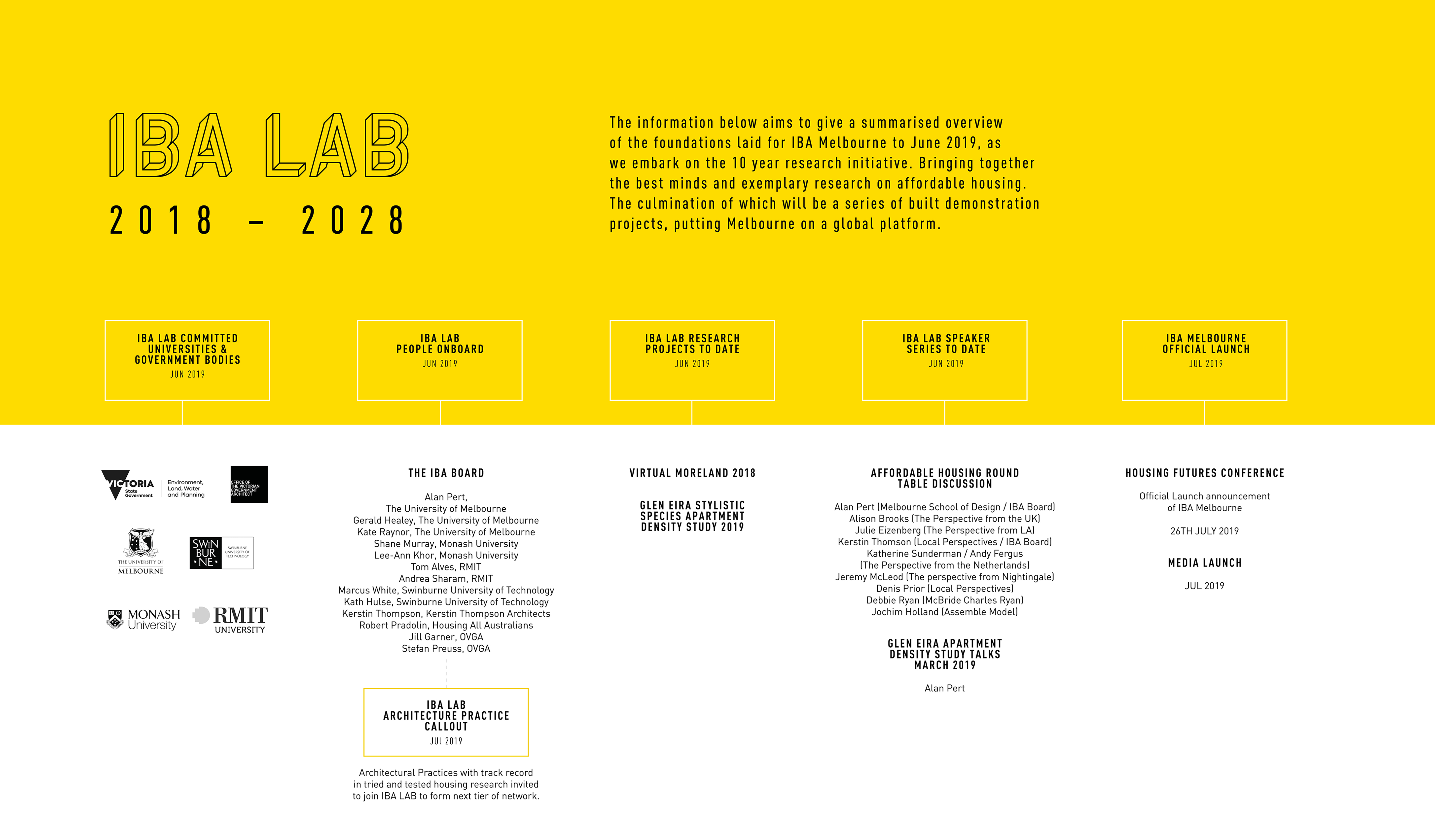WHAT IS IBA LAB?
Completed IBA LAB projects:
Density by Design
Virtual Moreland
Glen Eira Apartment Density studies
Stylistic Species
IBA Lab will undertake projects which respond to Plan Melbourne 2017 – 2050 and propose solutions for Melbourne’s affordable and generational housing crisis.
IBA Lab brings the very best resources together, a combination of leading researchers, leading practitioners and government bodies. All sharing knowledge through collaboration on live IBA Lab Projects.
IBA Lab is a consortium of 4 leading Universities (their built environment schools) and a partnership with the Office for The Victorian Government Architect and Australian Institute of Architects-Vic Chapter. Learn more about the people behind IBA Lab here.
It functions thanks to a group of researchers, academics, practitioners, industry advisors and through sponsorship from DELWP and each of the Universities.
IBA Lab is developing a portfolio which contains a series of ongoing investigations that will manifest in multiple forms, such as research, publication, policy, competitions, exhibitions, and built prototypes.
It encourages architectural practice to recognise, communicate and disseminate all forms of architectural production – this includes buildings and knowledge; knowledge created through buildings (through the process of design) and knowledge created about them (through the process of inhabitation or performance).
It is a research group seeking to redraw the boundaries between research and practice through new collaborative research partnerships inside and outside of the institutions.
IBA Lab explores the challenges facing the 21st century metropolis through pure research and applied design research.
IBA Lab will explore new and existing territories of collaborative research within architecture and the built environment; how this might reshape practice and academia and how this might strengthen both. Within academia, a growing focus towards “research impact” provokes new questions about the value of research for practice, and of practice for research. Research impact has been defined as: “the demonstrable contribution that research makes to the economy, society, culture, national security, public policy or services, health, the environment, or quality of life, beyond contributions to academia” (Australian Research Council, 2015). Within this context we will see increasing value placed on existing and currently underutilised models of research “for” practice, whilst inviting new and innovative approaches. Could this new focus on research impact offer an exit strategy from the perceived narrowing of the architect’s role; could it expand the scope of architectural production into new territories? As Reiner de Graaf & Laura Baird of AMO suggest, in Rory Hyde’s book Future Practice, this shift “signals a potential future for design practice directed not only toward architectural production, but also toward architectural thinking applied in its broadest sense.”
Research in practice occurs organically in response to novel problems thrown up within the design process. This can include experimentation with new materials, or the application of certain typologies to new contexts. Research in academia is the targeted and systemic pursuit of new knowledge to inform multiple contexts. It seeks a broader understanding of the role that architecture plays in the world and where the opportunities to improve the status quo exist, but this usually stops short of offering a built solution. Academia needs buildings, and the people who create them, and it can offer research methods for practitioners to utilise in asking bigger questions about the buildings and cities they are creating and to broker change within this process. Academic practice can provide the skills to identify the unique value of new knowledge, to package this knowledge to obtain financial and institutional support for it, and the means to disseminate this knowledge where the greatest impact can be leveraged. Practice can provide the means to speculate on potential solutions to meet the needs, challenges and opportunities identified by traditional academic research. It can employ design research to prototype and iteratively test usable solutions in the context of a real project.


